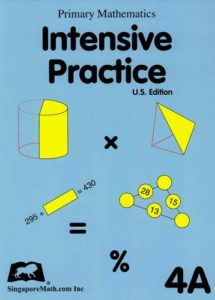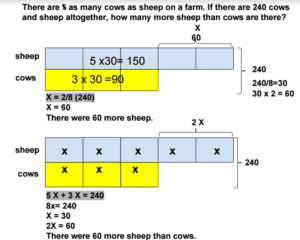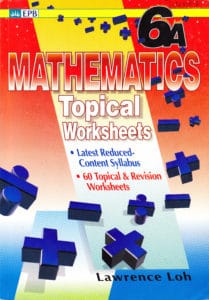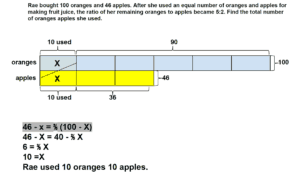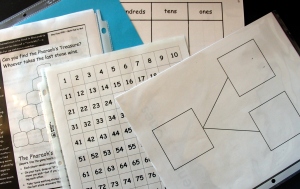Summer’s here, but you’re missing your math? Don’t despair – we’ve got you covered. Check the site each week for one whopper of a word problem that’s sure to challenge!
This week’s problem comes from Problem Solving Beyond the Classroom: Primary 6 by Bernice Lau Pui Wah, published in 2013 by Marshall Cavendish International (Singapore) Private Limited. 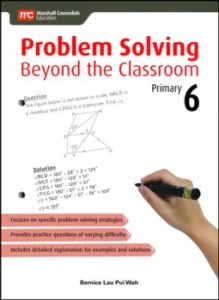
Sheela plans to make 245 bookmarks to sell at the funfair. Each day she will make 5 fewer bookmarks than the previous day. She plans to complete making the bookmarks in 7 days. How many bookmarks does Sheela plan to make on the first day?
Submit your solutions and we’ll post all interesting strategies next week.
Last week’s problem and solution:
There are 8 people on committee A and 9 people on committee B. If 5 people serve on both committees, how many people serve on only one of the committees?
Whew! How did you do?
Savvy reader Shirley Davis sent in her solution:
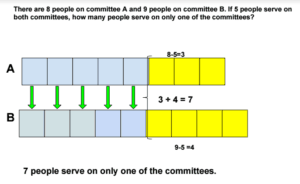

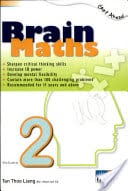
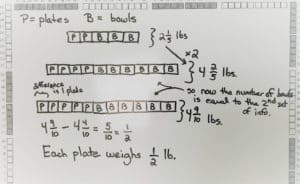
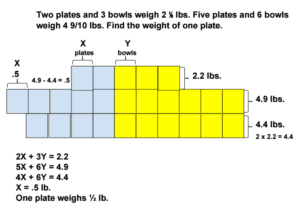
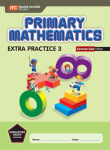



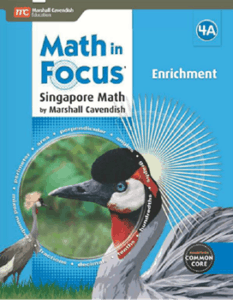
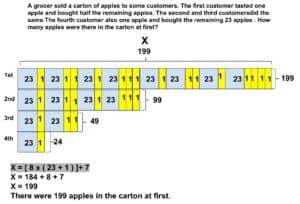
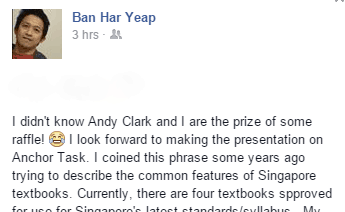
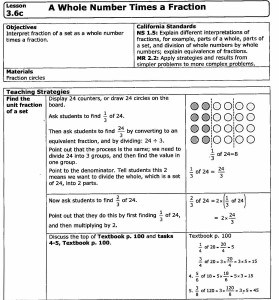
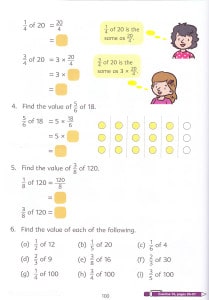 To approach this lesson with more of an emphasis on inquiry learning, look to the textbook.
To approach this lesson with more of an emphasis on inquiry learning, look to the textbook.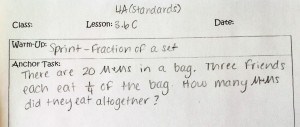
 After about five minutes, I gathered the students to share their methods of solving the problem. This is where my direct instruction came in. As students shared their strategies, I organized their independent learning into three methods.
After about five minutes, I gathered the students to share their methods of solving the problem. This is where my direct instruction came in. As students shared their strategies, I organized their independent learning into three methods.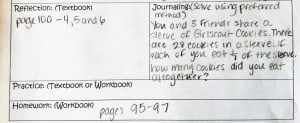 Students were then given the task of applying their newly discovered knowledge to solve the problems from the textbook, with my support, if needed.
Students were then given the task of applying their newly discovered knowledge to solve the problems from the textbook, with my support, if needed.